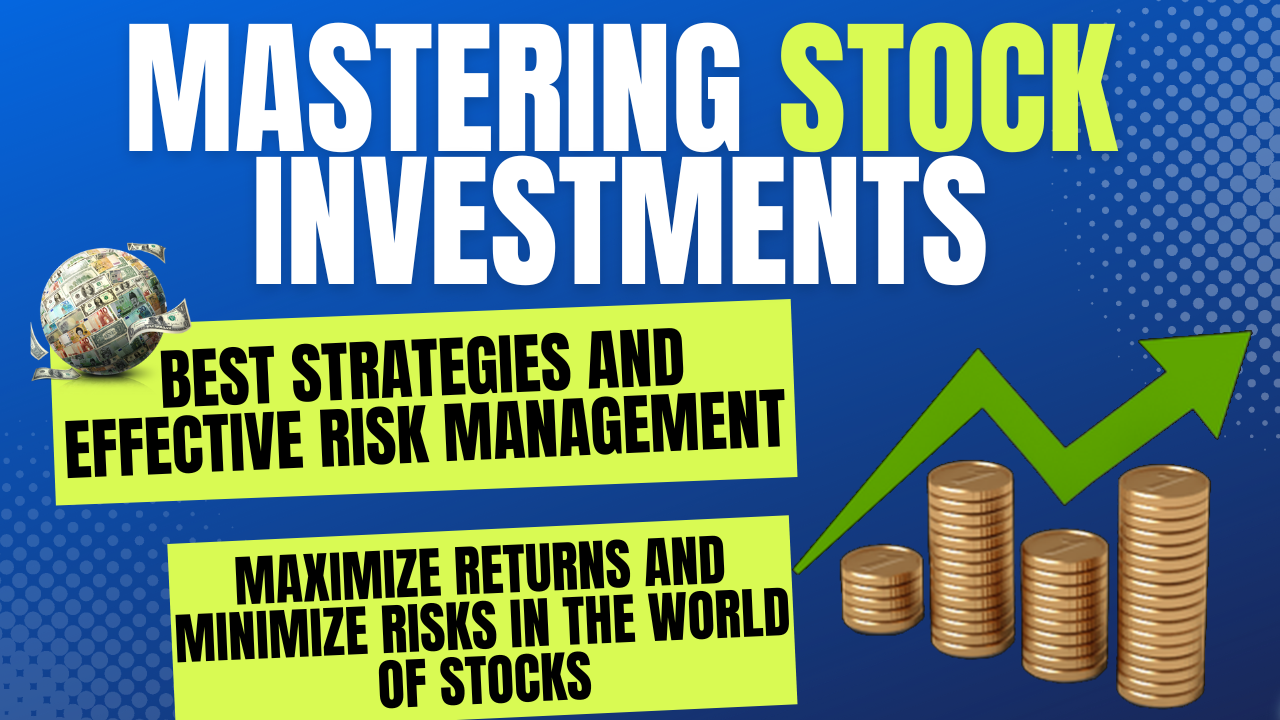Investing in stocks is a rewarding way to grow your wealth over time. However, it’s vital to approach stock market investments with a solid understanding of how they function and the various factors that can influence stock performance and overall market trends. In this comprehensive guide, we will delve into the fundamentals of stock investing, covering everything from the basics to advanced strategies for optimizing your returns.

Understanding Stocks
At its core, stocks, also known as equities or shares, represent ownership in a company. When you invest in a stock, you are essentially purchasing a share of that company and becoming a shareholder. As a shareholder, you hold certain rights, including the ability to vote on key company decisions and potentially receiving dividends – your share of the company’s profits.
Companies often raise capital by issuing stocks to investors, typically during an Initial Public Offering (IPO). They may also release additional stocks through secondary offerings to generate funds for various purposes.
Types of Stocks
There are two primary categories of stocks:
- Common Stocks: These provide ownership in a company and usually include voting rights and dividend entitlements. Common stocks are prevalent in the market.
- Preferred Stocks: These stocks typically offer a stronger claim on a company’s assets and earnings but usually lack voting rights. They are considered less common but can be a valuable addition to a diversified portfolio.
Within these categories, stocks can be further categorized into various subtypes, including:
- Growth Stocks: These belong to companies expected to experience rapid growth, often due to innovative products or services. While they offer substantial potential for returns, they also come with higher risk due to market sensitivity.
- Value Stocks: Value stocks are found in companies perceived to be undervalued by the market, with potential for future appreciation. They often represent well-established firms with consistent profitability.
- Dividend Stocks: These stocks provide regular dividend payments to shareholders, making them a popular choice for income-focused investors.
Exploring the Stock Market
A stock market is a marketplace where investors can buy and sell stocks, each representing ownership in publicly traded companies. The stock market comprises exchanges such as the New York Stock Exchange (NYSE) and the NASDAQ. These exchanges facilitate the trading of stocks listed by companies.
Stock prices are determined by the laws of supply and demand. When more people want to buy a stock than sell it, its price rises, and vice versa. Several factors, including a company’s financial performance, economic conditions, and market trends, influence stock prices.
Initiating Your Stock Investment Journey
If you’re new to stock investing, your first step is to open a brokerage account. A brokerage account allows you to trade stocks and other investments like mutual funds and ETFs. Popular options include online platforms like Robinhood and E TRADE, as well as traditional firms such as Charles Schwab and Fidelity.
Before opening an account, consider the type of account that suits your needs, fees associated with it, and the range of investment products offered. Diversifying your portfolio by investing in different asset classes, including stocks, bonds, and cash, is advisable.
Proven Investment Strategies
Several strategies exist for investing in stocks. The choice of strategy should align with your financial objectives and risk tolerance:
- Value Investing: Invest in undervalued stocks with the expectation that their prices will eventually rise to their true value.
- Growth Investing: Focus on companies poised for rapid growth, even if they are not yet profitable.
- Income Investing: Seek regular income from dividend-paying stocks or companies with potential for dividend growth.
- Index Investing: Invest in a diversified basket of stocks represented by market indices, such as the S&P 500.
- Active Investing: Actively trade stocks with the goal of outperforming the market. This approach requires significant time and effort and may not be suitable for all investors.
Navigating the World of Risk
Investing in stocks inherently involves risks, including:
- Market Risk: The potential for investments to decline due to market and economic fluctuations.
- Company-Specific Risk: Risks associated with individual companies’ financial difficulties or negative events.
- Liquidity Risk: The risk of being unable to sell an investment when needed due to a lack of buyers.
- Inflation Risk: The risk that investment values may decline due to inflation.
- Interest Rate Risk: The risk of investment value changes resulting from shifts in interest rates.
Effective Risk Management Techniques
To mitigate risks, employ effective strategies:
- Diversification: Spread investments across different stocks and sectors to minimize the impact of individual investments on your overall portfolio.
- Asset Allocation: Allocate your portfolio across various asset classes, such as stocks, bonds, and cash, to reduce risk.
- Risk Tolerance: Align your investment strategy with your personal risk tolerance.
- Risk Management Tools: Utilize tools like stop-loss orders, margin, and options to manage risk effectively.
Conclusion
Investing in stocks can be a rewarding endeavor, but it is essential to understand and manage the associated risks. By diversifying your portfolio, employing smart asset allocation strategies, and considering your risk tolerance, you can effectively manage risk in your stock investments. Additionally, utilizing risk management tools like stop-loss orders and staying informed about market conditions and your investments will contribute to your success as a stock investor.



